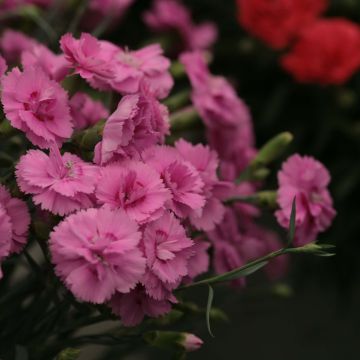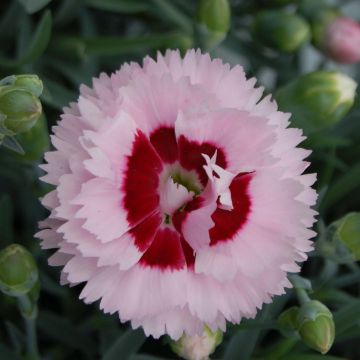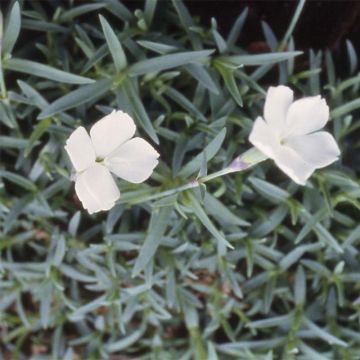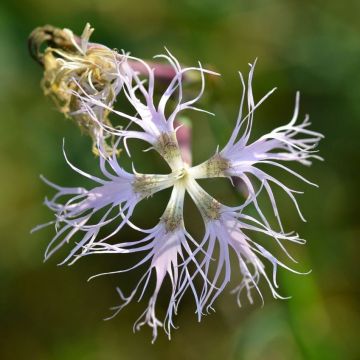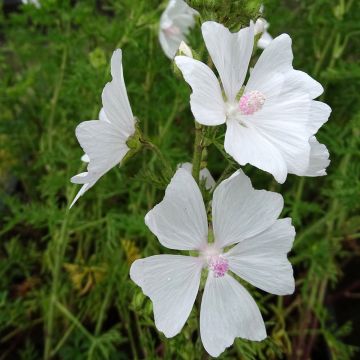

Dianthus barbatus Nigrescens Sooty


Dianthus barbatus Nigrescens Sooty


Dianthus barbatus Nigrescens Sooty


Dianthus barbatus Nigrescens Sooty


Dianthus barbatus Nigrescens Sooty
Dianthus barbatus Nigrescens Sooty
Dianthus barbatus Nigrescens Sooty
Sweet William
This item cannot be shipped to the selected country
Delivery charge from €5.90
More information
Schedule delivery date,
and select date in basket
This plant carries a 6 months recovery warranty
More information
We guarantee the quality of our plants for a full growing cycle, and will replace at our expense any plant that fails to recover under normal climatic and planting conditions.
From €5.90 for pickup delivery and €6.90 for home delivery
Express home delivery from €8.90.
Does this plant fit my garden?
Set up your Plantfit profile →
Description
The Dianthus barbatus nigrescens 'Sooty' is a unique variety of carnation that stands out in any garden due to its striking red and black colours. The plant is small, with green leaves with red and black metallic reflections and purple stems that bear bouquets in a dark shade of red that almost looks black in full sun. The flowers bloom from May and can last up to two months, provided that the faded stems are regularly removed. Plant it alongside other plants with dark foliage or pair it with small coppery grasses like autumn sedges to create a beautiful contrast.
The Dianthus barbatus is a plant belonging to the Caryophyllaceae family, found in many temperate regions of Europe and Asia. The nigrescens form is often confused with its cultivar 'Sooty', and it is characterised by the mahogany or purple colour with black metallic reflections of its foliage and the intense chocolate-red colour of its flowers. While not very hardy, it is most commonly known as a biennial plant, flowering the second year after sowing. During its first year, the plant forms a tight basal clump of long pointed leaves that sheath the stems at the base. The purple-black colour of the foliage is exquisite in winter, even without flowers. The 'Sooty' selection blooms from May to July. Its almost black flower buds open into large single, fringed flowers gathered in flattened cymes at the end of thin, sturdy purple stems, which stand 40 cm (15.7 in) tall. The flowers have a deep red-brown colour that becomes more pink towards the centre and on the edge of the petals. They also have an excellent vase life. The flowers' scent is spicy and sweet, reminiscent of cloves and cinnamon.
Carnations are one of the easiest plants to grow, requiring very little maintenance once established. These plants, along with bellflowers and columbines, are perfect for any garden or bouquet, adding a touch of poetry and mystery. If you want to enjoy their sweet fragrance fully, we suggest planting them along a path or near an entrance. In a flower bed, mass plant Sooty carnations to create beautiful splashes of colour and combine them with other plants such as black Ophiopogon 'Purpurascens' clover, large sedums with dark foliage, or Pennisetum setaceum Rubrum, and Amaranth Velvet Curtains. Additionally, the small white flowers of Chamomiles or Iberis will form elegant contrasts with their colours. Carnations are also suitable for being grown in pots on the terrace or balcony, provided the drainage and watering are good and are given fertiliser.
Note: These plug plants are reserved for experienced gardeners. Transplant them as soon as possible, either in pots, containers, or flower beds.
Report an error about the product description
Dianthus barbatus Nigrescens Sooty in pictures
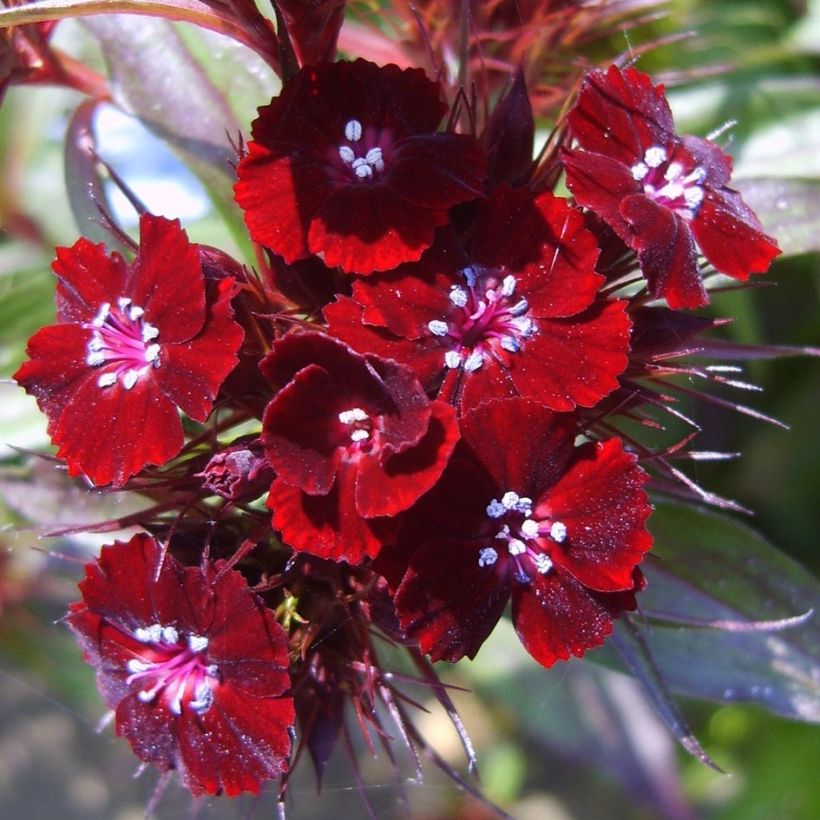

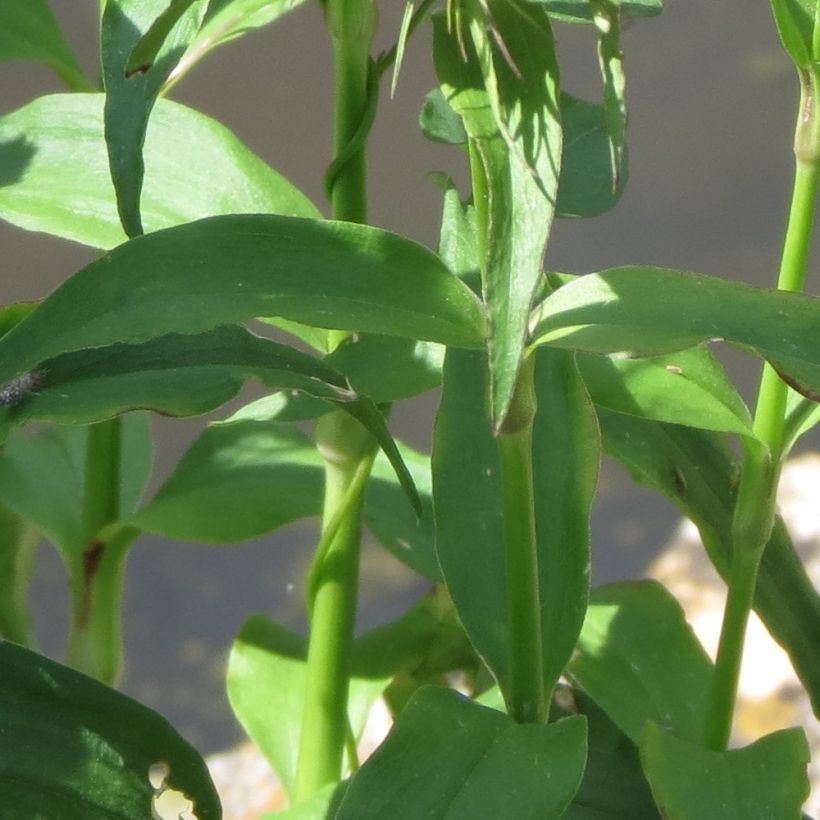

Flowering
Foliage
Plant habit
Botanical data
Dianthus
barbatus
Nigrescens Sooty
Caryophyllaceae
Sweet William
Cultivar or hybrid
Other Dianthus - Pinks
Planting and care
This particular type of dianthus is known to thrive in a variety of soil types, including light, moist, rich, clay, and limestone soil, as long as it is exposed to full sun. Once it has grown and established itself well, it is tolerant of water. It is a common choice for wild gardens, as it will self-seed when its flowers fade, although this is not always guaranteed.
Planting period
Intended location
Care
-
, onOrder confirmed
Reply from on Promesse de fleurs
Cottage garden perennials
Haven't found what you were looking for?
Hardiness is the lowest winter temperature a plant can endure without suffering serious damage or even dying. However, hardiness is affected by location (a sheltered area, such as a patio), protection (winter cover) and soil type (hardiness is improved by well-drained soil).

Photo Sharing Terms & Conditions
In order to encourage gardeners to interact and share their experiences, Promesse de fleurs offers various media enabling content to be uploaded onto its Site - in particular via the ‘Photo sharing’ module.
The User agrees to refrain from:
- Posting any content that is illegal, prejudicial, insulting, racist, inciteful to hatred, revisionist, contrary to public decency, that infringes on privacy or on the privacy rights of third parties, in particular the publicity rights of persons and goods, intellectual property rights, or the right to privacy.
- Submitting content on behalf of a third party;
- Impersonate the identity of a third party and/or publish any personal information about a third party;
In general, the User undertakes to refrain from any unethical behaviour.
All Content (in particular text, comments, files, images, photos, videos, creative works, etc.), which may be subject to property or intellectual property rights, image or other private rights, shall remain the property of the User, subject to the limited rights granted by the terms of the licence granted by Promesse de fleurs as stated below. Users are at liberty to publish or not to publish such Content on the Site, notably via the ‘Photo Sharing’ facility, and accept that this Content shall be made public and freely accessible, notably on the Internet.
Users further acknowledge, undertake to have ,and guarantee that they hold all necessary rights and permissions to publish such material on the Site, in particular with regard to the legislation in force pertaining to any privacy, property, intellectual property, image, or contractual rights, or rights of any other nature. By publishing such Content on the Site, Users acknowledge accepting full liability as publishers of the Content within the meaning of the law, and grant Promesse de fleurs, free of charge, an inclusive, worldwide licence for the said Content for the entire duration of its publication, including all reproduction, representation, up/downloading, displaying, performing, transmission, and storage rights.
Users also grant permission for their name to be linked to the Content and accept that this link may not always be made available.
By engaging in posting material, Users consent to their Content becoming automatically accessible on the Internet, in particular on other sites and/or blogs and/or web pages of the Promesse de fleurs site, including in particular social pages and the Promesse de fleurs catalogue.
Users may secure the removal of entrusted content free of charge by issuing a simple request via our contact form.
The flowering period indicated on our website applies to countries and regions located in USDA zone 8 (France, the United Kingdom, Ireland, the Netherlands, etc.)
It will vary according to where you live:
- In zones 9 to 10 (Italy, Spain, Greece, etc.), flowering will occur about 2 to 4 weeks earlier.
- In zones 6 to 7 (Germany, Poland, Slovenia, and lower mountainous regions), flowering will be delayed by 2 to 3 weeks.
- In zone 5 (Central Europe, Scandinavia), blooming will be delayed by 3 to 5 weeks.
In temperate climates, pruning of spring-flowering shrubs (forsythia, spireas, etc.) should be done just after flowering.
Pruning of summer-flowering shrubs (Indian Lilac, Perovskia, etc.) can be done in winter or spring.
In cold regions as well as with frost-sensitive plants, avoid pruning too early when severe frosts may still occur.
The planting period indicated on our website applies to countries and regions located in USDA zone 8 (France, United Kingdom, Ireland, Netherlands).
It will vary according to where you live:
- In Mediterranean zones (Marseille, Madrid, Milan, etc.), autumn and winter are the best planting periods.
- In continental zones (Strasbourg, Munich, Vienna, etc.), delay planting by 2 to 3 weeks in spring and bring it forward by 2 to 4 weeks in autumn.
- In mountainous regions (the Alps, Pyrenees, Carpathians, etc.), it is best to plant in late spring (May-June) or late summer (August-September).
The harvesting period indicated on our website applies to countries and regions in USDA zone 8 (France, England, Ireland, the Netherlands).
In colder areas (Scandinavia, Poland, Austria...) fruit and vegetable harvests are likely to be delayed by 3-4 weeks.
In warmer areas (Italy, Spain, Greece, etc.), harvesting will probably take place earlier, depending on weather conditions.
The sowing periods indicated on our website apply to countries and regions within USDA Zone 8 (France, UK, Ireland, Netherlands).
In colder areas (Scandinavia, Poland, Austria...), delay any outdoor sowing by 3-4 weeks, or sow under glass.
In warmer climes (Italy, Spain, Greece, etc.), bring outdoor sowing forward by a few weeks.

































